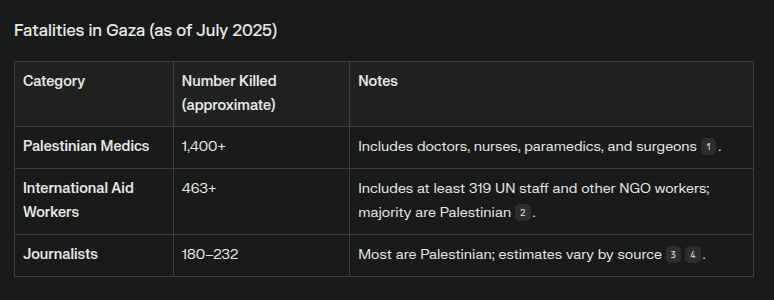Besides Muslim on Muslim violence, Soviet gulags and pogroms, Mao starvation, Belgium atrocities in the Congo Free State and other colonial massacres and resource thefts,
Trump’s self-adulation is symbolic of two of the most nefarious forces on the planet: the United States—with its special relationship with the UK and its ally Israel, the tail that wags the dog—and that agent of diabolical religious persecutions and tortures and child sexual abuse, Catholicism.
Child Sexual Abuse by the Catholic Church
Centuries of Abuse and Secrecy
Sexual violence against children within the Catholic Church is a centuries-old issue, historically concealed by secrecy, cover-ups, and lack of accountability. The Church often transferred abusive clergy rather than reporting them, and resisted legal reforms aimed at justice for survivors.
France (1950–2020)
An independent inquiry in 2021 found that about 216,000 children, mostly boys aged 10–13, were sexually abused by clergy in the French Catholic Church between 1950 and 2020. Including lay members, the number could be as high as 330,000. The report accused the Church of "cruel indifference" and institutional cover-up, with most abuse unreported until recent decades.
Australia (1950–2010)
A 2017 Royal Commission found that 7% of Catholic priests in Australia were accused of child abuse, with over 4,444 allegations reported to Church authorities. In some dioceses, over 15% of priests were identified as offenders. Allegations were rarely investigated, and high-ranking clergy, including Cardinal George Pell, were implicated.
England and Wales (1970–2015)
Between 1970 and 2015, the Roman Catholic Church in England and Wales received over 900 complaints involving more than 3,000 instances of child sexual abuse by over 900 individuals connected to the Church. There were 177 prosecutions and 133 convictions, but the true scale is likely much higher. The Church prioritized its reputation over the welfare of children, often failing to support victims and instead protecting perpetrators.
Poland (1990–2018)
Reports from over 10,000 parishes revealed that 382 priests were accused of abusing 625 children, mostly under 16, between 1990 and mid-2018. The Church was criticized for underestimating the problem and for failing to report cases to authorities, instead investigating internally and often moving accused clergy to new parishes.
Global and Institutional Response
The United Nations and advocacy groups have criticized the Holy See for systemic failures in child protection, transparency, and accountability. Despite public apologies and some reforms, progress has been slow due to internal resistance and lack of political will.
Religious Persecutions, Tortures, and Imprisonments by the Catholic Church
Medieval and Early Modern Periods (c. 12th–18th centuries)
The Catholic Church, especially through the Inquisition, played a central role in persecuting non-believers, heretics, and so-called "heathens." Methods included torture, imprisonment, and execution, justified as means to protect the faith and maintain religious unity. The Church claimed the right to use physical coercion against formal apostates and heretics, though it often adapted its methods to the political climate of the time.
Inquisition (c. 1230s–1800s)
The Medieval Inquisition (established in the 1230s), the Spanish Inquisition (1478–1834), and the Roman Inquisition (1542–c. 1800s) targeted Jews, Muslims, Protestants, and suspected witches, as well as non-believers. Accused individuals faced imprisonment, torture to extract confessions, and execution by burning or other means. The Inquisition's activities were sanctioned by papal authority and local rulers.
Suppression of Non-Christian Religions
Throughout the Middle Ages and into the early modern era, the Church supported or participated in the suppression of pagan, Jewish, and Muslim communities in Europe, especially during the Crusades and Reconquista. Non-believers were often forced to convert, expelled, or executed.
Apostasy and Heresy Laws
The Church's canon law and cooperation with secular authorities led to the imprisonment and execution of those accused of apostasy (leaving the faith) or heresy (holding beliefs contrary to Church doctrine). Punishments included excommunication, confiscation of property, imprisonment, torture, and death, particularly from the 13th to 17th centuries.
Persecution of Galileo and Suppression of Scientific Facts
Giordano Bruno (1600)
Philosopher Giordano Bruno, who supported the heliocentric theory and other scientific ideas, was tried by the Inquisition and burned at the stake for heresy.
Galileo Galilei and Heliocentrism (1610–1633)
Galileo Galilei promoted the heliocentric model, which placed the Sun at the center of the universe, based on his telescopic observations.
1616: The Inquisition declared heliocentrism "formally heretical" and banned Copernicus’s and Galileo’s works. Galileo was ordered to abandon the theory and not to teach or defend it in any way.
1632: Galileo published Dialogue Concerning the Two Chief World Systems, defending heliocentrism.
1633: The Inquisition tried Galileo for heresy, found him "vehemently suspect of heresy," forced him to recant, and sentenced him to house arrest for life. His book was banned, and he was threatened with torture if he did not comply.
The Church maintained the ban on heliocentric works until 1758, and only in 1835 were Galileo’s and Copernicus’s works removed from the Index of Forbidden Books. In 1992, the Church formally acknowledged that Galileo had been unfairly persecuted.
Other Suppressions of Scientific Fact
The Church also opposed other proven scientific facts when they conflicted with doctrine, including early resistance to anatomical dissection and, later, to Darwinian evolution (though these were less often prosecuted as criminal heresy than the Galileo case).
References :
- Wikipedia: Catholic Church sexual abuse cases : https://en.wikipedia.org/wiki/Catholic_Church_sexual_abuse_cases
- IICSA: Roman Catholic Church Investigation Report : https://www.iicsa.org.uk/reports-re.../roman-catholic-church/executive-summary.html
- BBC: French Church abuse - 216,000 children were victims : https://www.bbc.co.uk/news/world-europe-58801183
- CRIN: Child sexual abuse in the Catholic Church : https://home.crin.org/issues/sexual-violence/sexual-violence-against-children-catholic-church
- New Advent: Catholic Encyclopedia - Persecution : https://www.newadvent.org/cathen/11703a.htm
- Al Jazeera: The global scale of child sexual abuse in the Catholic Church : https://www.aljazeera.com/news/2021/10/5/awful-truth-child-sex-abuse-in-the-catholic-church
- Wikipedia: Galileo affair : https://en.wikipedia.org/wiki/Galileo_affair
- Galileo Timeline (PDF)
- UCLA Newsroom: The truth about Galileo and his conflict with the Catholic Church : https://newsroom.ucla.edu/releases/the-truth-about-galileo-and-his-conflict-with-the-catholic-church
- Italian Art Society: Galileo banned in 1616 : https://www.italianartsociety.org/2...ng-the-opinion-that-the-earth-orbits-the-sun/







